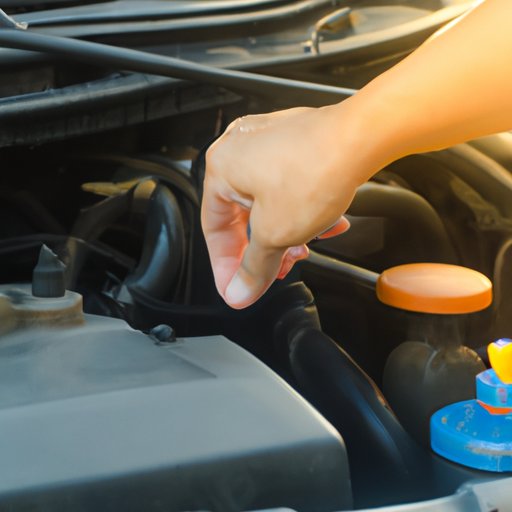Introduction
Breaking down and being stranded on the side of the road is a nightmare for any driver, especially if their car has overheated and broken down. Knowing what to do when your car overheats can save you time, money, and a whole lot of stress. In this article, we’ll cover the tell-tale signs of an overheating engine and review a comprehensive checklist to get your overheated car moving again and on its way home safely.
Know the Signs
It’s essential to recognize the first signs of an overheating engine. These signs include a temperature gauge needle that has moved toward or into the red zone, steam coming from the engine, and the foul smell of burning rubber or plastic.
If you notice any of these signs, take action immediately. Failure to address an overheating engine can lead to significant engine damage, causing the engine to seize up and result in an expensive repair or even a complete engine replacement.
Turn Off the AC
If you notice your car overheating, the first immediate action to take is to turn off the air conditioning. The reason for this is that the AC system uses a significant amount of the car’s engine power to operate, adding extra stress to the engine when it is overheating.
To turn off your car’s AC, locate the AC button on the dashboard, and press it off. On newer cars, you may need to turn off the entire climate control system to ensure that the AC is off fully.
Pull Over Safely
The next step is to pull over safely to a location away from the road’s traffic to avoid obstructing other drivers. You can quickly reduce the amount of heat generated by the engine by increasing airflow around it, which is why you should avoid staying in traffic as your engine increases in temperature.
If you cannot pull over immediately, turn on your car’s heater and blower fan to help disperse heat quickly until you can reach a safe location to park and turn off the engine completely.
Let the Engine Cool
Once you have safely pulled over, let your engine cool for at least 15-20 minutes before you even think about opening the hood. Handling the engine while it is still hot can cause serious burns and injuries.
To speed up the cooling process, you can open the windows and hood to allow the hot air to escape and circulate cool air around the engine.
Add Coolant
If your car’s engine is still overheating after it has cooled down, you may need to add coolant to the system. It is essential to have the right mixture of coolant and water in your car’s cooling system to prevent overheating. The correct ratio typically calls for a 50/50 mix of coolant and water.
To add coolant, locate the coolant reservoir or radiator cap and check the fluid level. Slowly add the coolant mixture until you reach the recommended level. You may need to wait another few minutes for the coolant to circulate before starting your engine.
Check for Leaks
If adding coolant to your engine doesn’t resolve the overheating issue, there may be a leak or damage to the engine that needs to be addressed. Check for visible leaks around the radiator, hoses, and engine block area. Hoses and seals can crack or come lose over time, and an inspection now can save you from a complete breakdown later.
If you find a leak or other damage, getting professional help may be the best course of action. It’s possible that your car might need a radiator flush or other maintenance services to prevent any potential future damage.
On the Road Again
If you have resolved the issue causing the engine to overheat, it’s time to safely get back on the road. When starting your car again, keep an eye on the temperature gauge to make sure it’s in the normal range. Drive slowly and smoothly to avoid sudden increases in temperature.
If your engine is still overheating, turn off the engine and let it cool again before continuing. Your cooling system might need more repairs, or you might need to call for roadside assistance.
Conclusion
Knowing what to do when your car overheats can keep you safe and prevent costly repairs. By recognizing the warning signs of an overheating engine and following the steps we’ve covered, you’ll be prepared and empowered to quickly address any car maintenance problems that come your way.
(Note: Is this article not meeting your expectations? Do you have knowledge or insights to share? Unlock new opportunities and expand your reach by joining our authors team. Click Registration to join us and share your expertise with our readers.)
